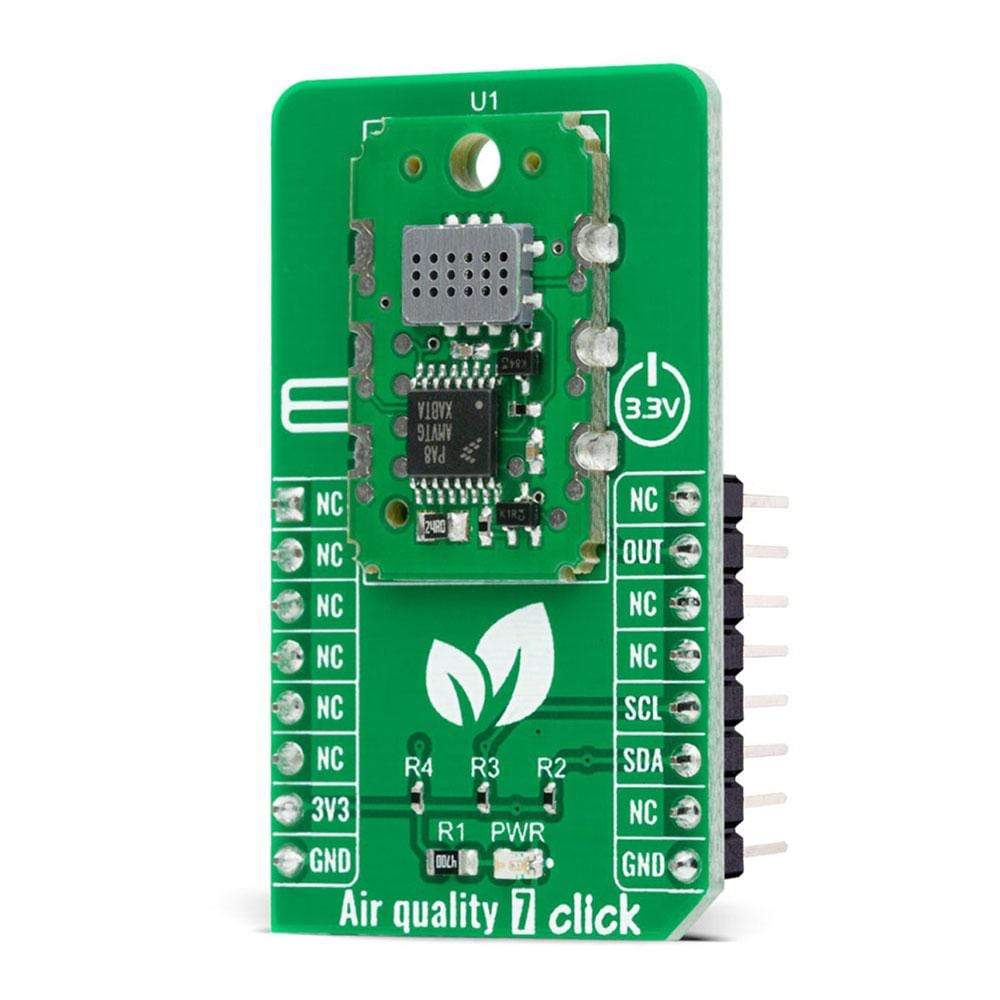
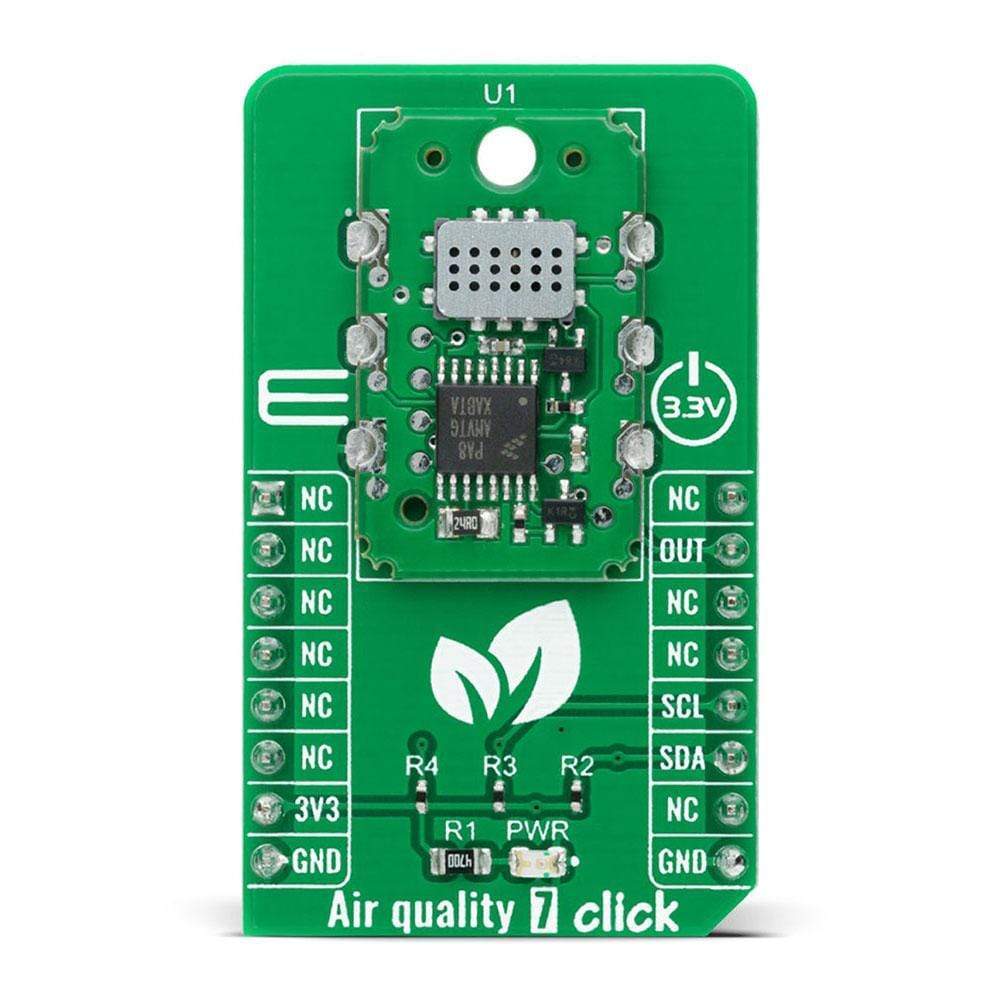
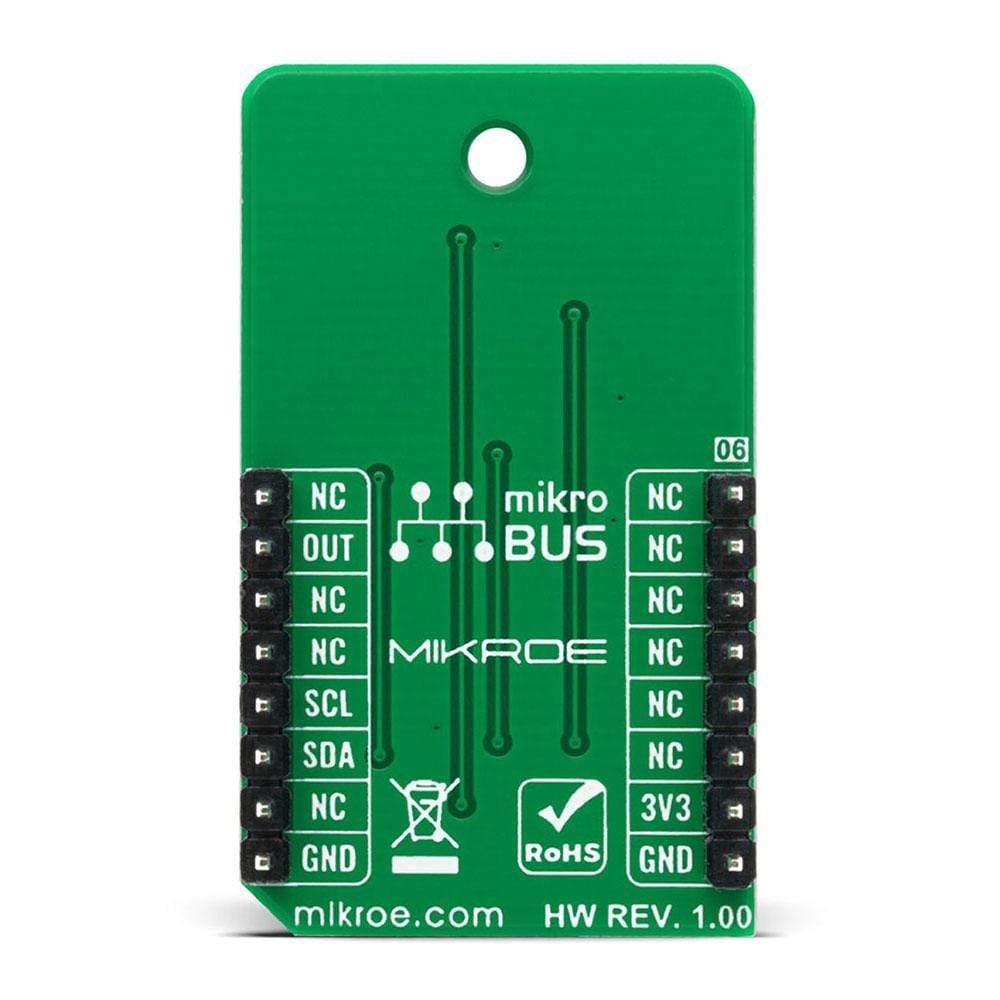
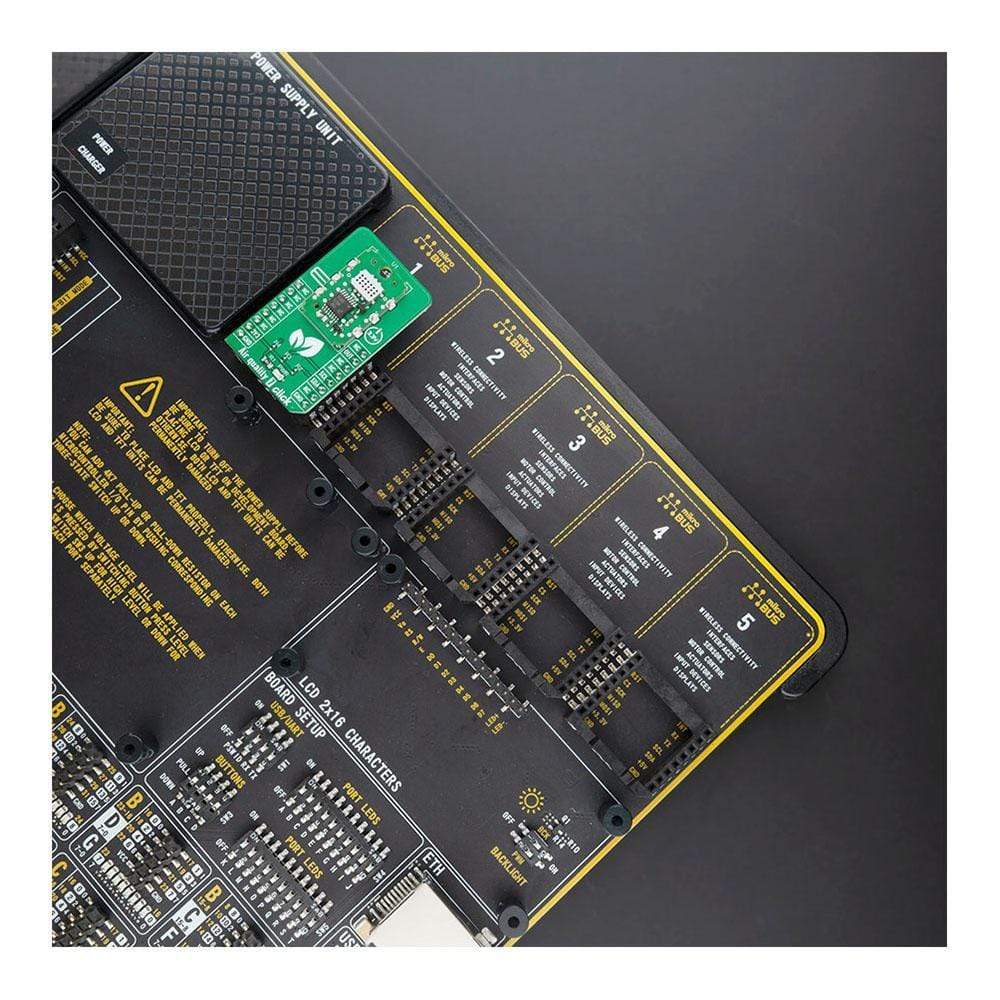
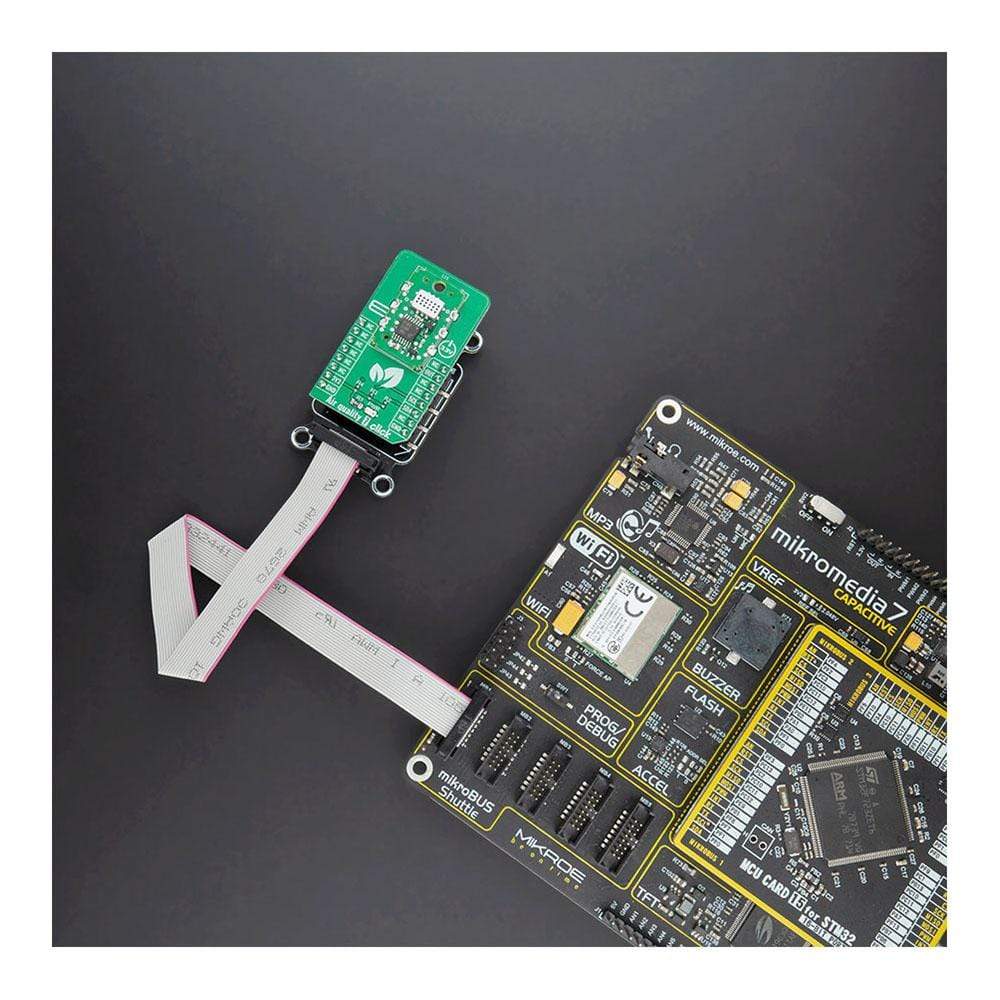
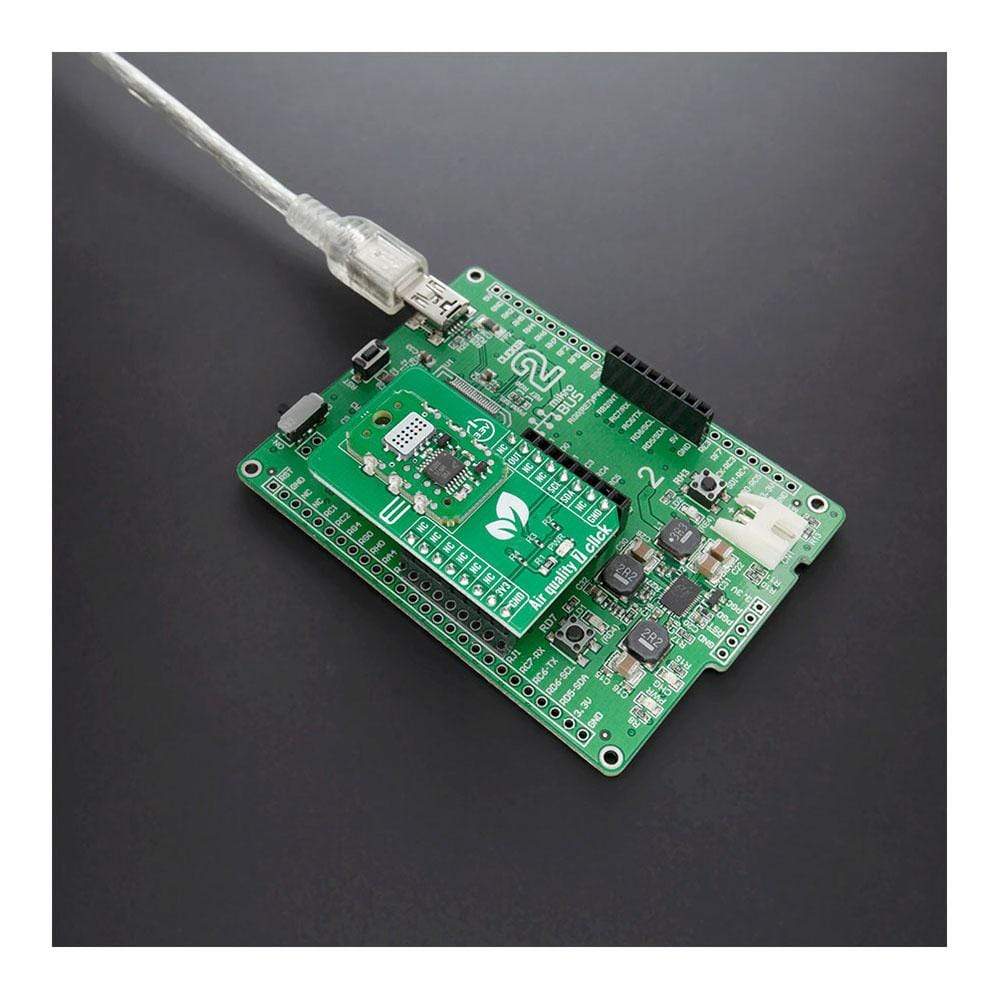
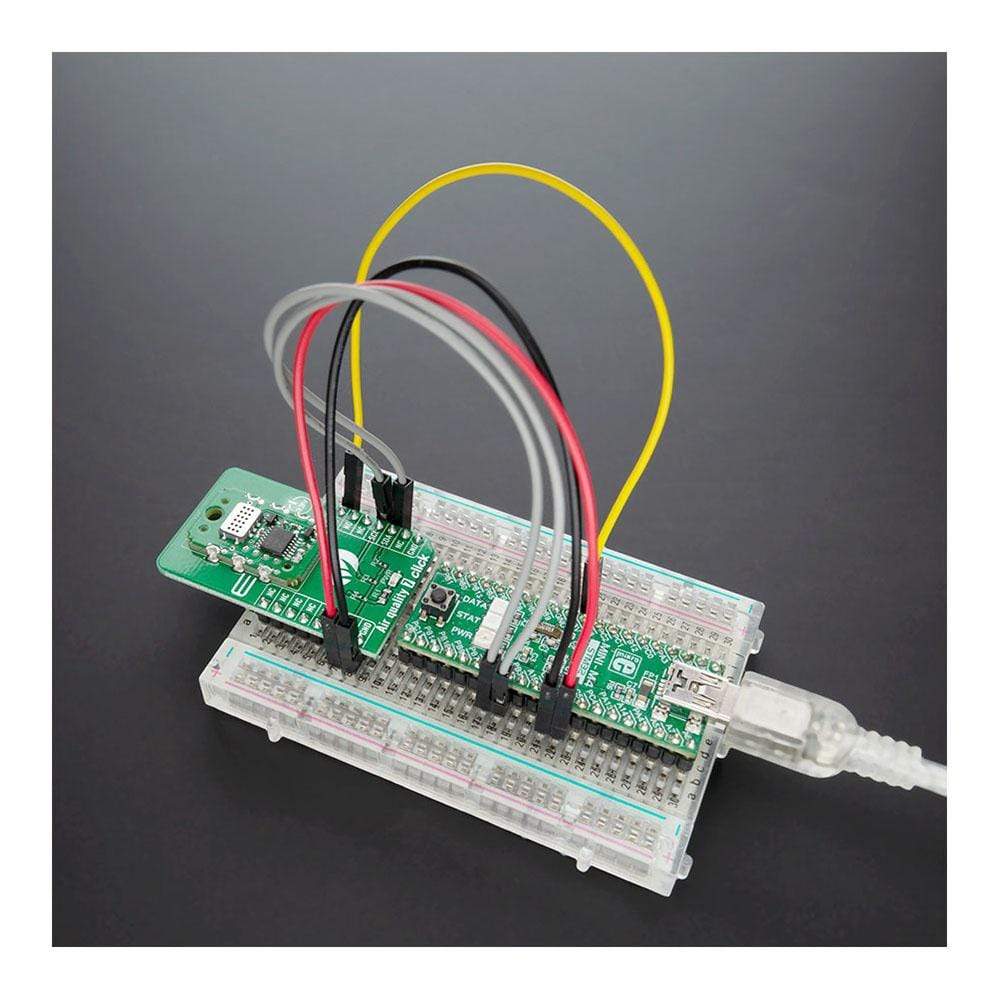
Overview
The Air Quality 7 Click Board™ is a compact add-on board that combines state-of-the-art MOS sensor technology with intelligent detection algorithms to monitor VOCs and CO2 equivalent variations in confined spaces. This board features the MiCS-VZ-89TE, an integrated sensor module for indoor air quality monitoring from Amphenol. This Click Board™, an I2C configurable environmental sensor board, has many features such as low power, wide VOCs detection range, high sensitivity, and high resistance to shocks and vibrations which make it an excellent choice for VOC and CO2 monitoring in confined spaces such as meeting rooms and vehicle cabins, saving energy and reducing cost-of-ownership.
The Air Quality 7 Click Board™ is supported by a mikroSDK compliant library, which includes functions that simplify software development. This Click Board™ comes as a fully tested product, ready to be used on a system equipped with the mikroBUS™ socket.
Downloads
Der Luftqualität 7 Click Board™ ist eine kompakte Zusatzplatine, die modernste MOS-Sensortechnologie mit intelligenten Erkennungsalgorithmen kombiniert, um VOC- und CO2-Äquivalentschwankungen in beengten Räumen zu überwachen. Diese Platine verfügt über das MiCS-VZ-89TE, ein integriertes Sensormodul zur Überwachung der Raumluftqualität von Amphenol. Dieses Click Board™, eine I2C-konfigurierbare Umweltsensorplatine, verfügt über viele Funktionen wie niedrigen Stromverbrauch, großen VOC-Erkennungsbereich, hohe Empfindlichkeit und hohe Stoß- und Vibrationsfestigkeit, was es zu einer ausgezeichneten Wahl für die VOC- und CO2-Überwachung in beengten Räumen wie Konferenzräumen und Fahrzeugkabinen macht, wodurch Energie gespart und die Betriebskosten gesenkt werden.
Der Luftqualität 7 Click Board™ wird durch eine mikroSDK-kompatible Bibliothek unterstützt, die Funktionen enthält, die die Softwareentwicklung vereinfachen. Dieses Click Board™ wird als vollständig getestetes Produkt geliefert und ist bereit für den Einsatz auf einem System, das mit der mikroBUS™-Buchse ausgestattet ist.
| General Information | |
|---|---|
Part Number (SKU) |
MIKROE-4196
|
Manufacturer |
|
| Physical and Mechanical | |
Weight |
0.019 kg
|
| Other | |
Country of Origin |
|
HS Code Customs Tariff code
|
|
EAN |
8606027380433
|
Warranty |
|
Frequently Asked Questions
Have a Question?
Be the first to ask a question about this.







